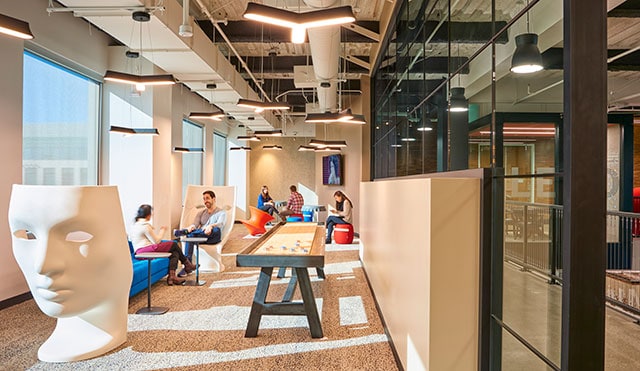
We live in an age of technology and convenience. Automation has impacted almost every aspect of our work lives, from the ability to order morning coffee and breakfast from a phone, to programs that find mistakes in our work output, to clouds that allow us to work from a location other than the office at any time. Somehow, all of this convenience and all of these tools to increase productivity have left the modern worker feeling disconnected – from society, from the mission of their company, from their co-workers, and frequently from themselves.
Far from being Luddites and denying the incredible gains that technology has enabled, equal focus needs to be put on the worker and their needs as a human. By creating healthy environments that are designed with human neurobiology in mind, we can create workplaces that are memorable, meaningful and motivational, so that we increase the connection between co-workers, cultivating employee engagement and a sense of belonging.
Many studies have been conducted about the three biggest issues in the workplace today: recruiting, retention and employee disengagement. We also know that the three things that keep people coming back to work (aside from a paycheck) are a bond with the people they work with, connection to the mission of their company, and the feeling that their work has meaning.
So how do we create workplaces for people that are still built on a technology platform to support innovation and productivity while creating an environment that feeds their physical and mental needs – supporting human health and performance?
By designing with human neurobiology in mind we can create environments that are literally healthier for the humans that occupy them. Studies show that healthy, happy humans do better work. Burnout at work isn’t just related to physical exhaustion. It’s related to loneliness and a lack of connection. By finding ways to increase a sense of community and culture in the workplace, we find that people are more connected to their teams, their mission and their company, and happier as a result. Integrating technology into the workplace in a way that’s intuitive, foundational and reinforces the sense of community results in people feeling more in control of their environment rather than at the mercy of it, especially when technology isn’t available or doesn’t work.
The articles and projects highlighted in the attached PDF represent research and designs we’ve completed over the past year. Much of it is backed with hard data from the occupants. All of it is focused on creating a more human workplace. Are the projects “cool”? Yes. Do they look good? Absolutely. The real value for these clients is in their ability to differentiate themselves in the market by offering spaces that are actually better for their workforce.

